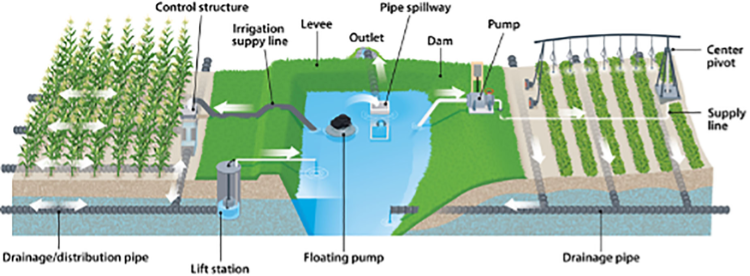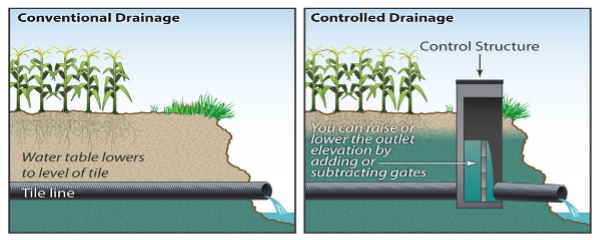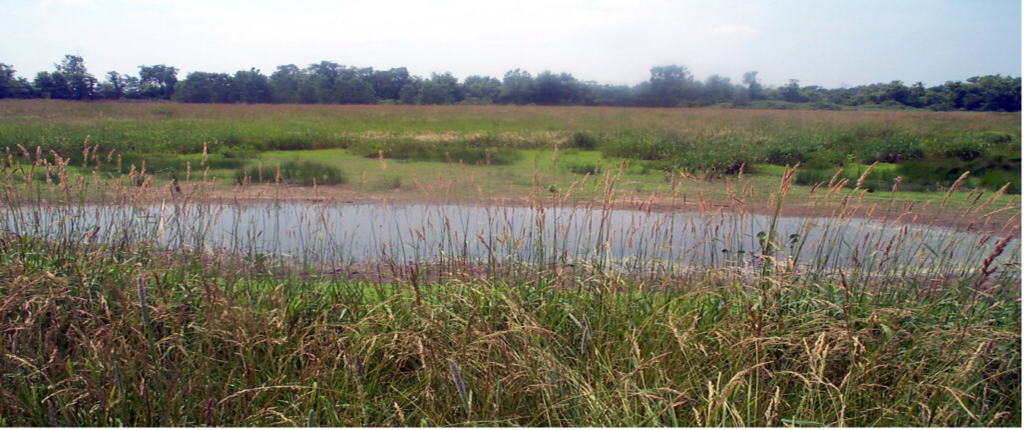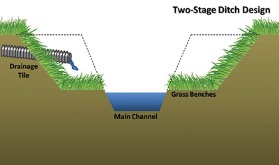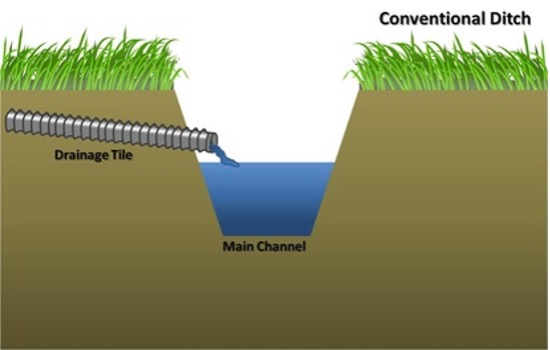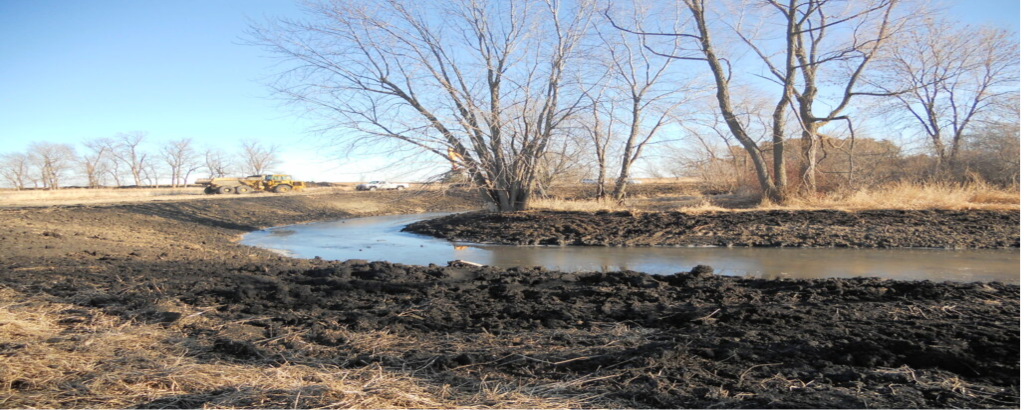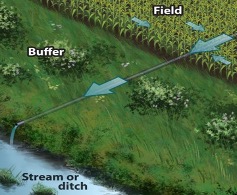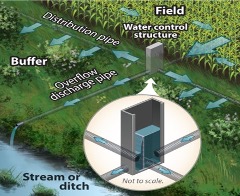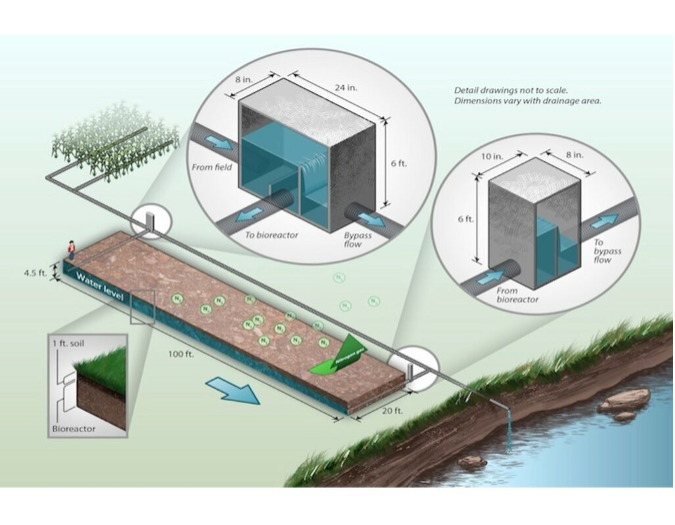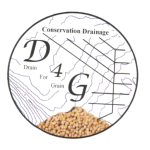
Drain For Grain
Conservation Drainage
A Good Drain Makes Grain!
Most of us know by now that good agricultural drainage increases overall yield and better utilizes applied inputs. After nearly 20 years of conventional drainage sales and service we at Long Enterprises LLC Drain for Grain Division are redirecting our focus from conventional drainage solutions to what has come to be known as Conservation Drainage. Instead of simply removing excess water from our fields we are now finding ways to manage water that may be in excess today, to treat it as it leaves our fields or better yet save it for a dryer time when we may need it back on the field. Perserving water in dry times is equally important to draining it in times of excess.



What is conservation drainage?
By in large this is surface channels and plains and or subsurface laterals and mains just like we’ve always done. Now however, we are adding (mostly) edge of field amendments to reduce the amount of “crop nutrients” that may become “stream contaminants” as they leave our fields in drainage water.
Does the arid climate of Kansas Truly Warrant Conservation Drainage?
Every summer we in south central Kansas hear of recreational lakes restricting water from swimming, fishing, and pets drinking at local lakes due to blooms of blue green algae. Blue green algae feeds on nitrates and more so phosphorus that potentially drains off of farm fields. In addition, it all flows downhill. Though a lesser contribution than some of our neighbors, nitrates in Kansas streams will find their way to the Gulf and contributes to hypoxia.
Does the NRCS still frown on AG drainage?
A wetland is still a wetland and they serve an important function related to water quality and wildlife habitat. However, not every crop impacting depression will qualify as a wetland. Those that do may prove to be cost effectively mitigated to another part of the field. Recently the NRCS has implemented several Conservation Practice Standards (CPS’s) that we believe can be used to capture all of the yield advantages of conventional drainage with the environmental advantages of good conservation stewardship. This means that conservation drainage could be supported by EQIP cost share programs.
Directing excess water (via surface or subsurface drains) from the body of your field to an edge of field conservation practice is a win/win for all involved! Note: To capture NRCS funding a few things need to be in place.
A. The proposed amendment must be defined in an NRCS Conservation Practice Standard (CPS).
B. The target CPS must be listed as applicable to your state as defined in the states Field Office Technical Manual.
C. The target CPS will need an authorized Technical Service Provide (TSP) to prepare designs. In some cases a state licensed Private Engineer (PE) will need to be involved.
Note: We at Long Enterprises LLC / Drain For Grain are neither TSP nor PE qualified. However, we work closely with a firm that meets both of these criteria. In the event you are not seeking NRCS funding we are ADMC certified designers and able to meet your needs for any drainage project.
Recent Supreme Court Rulings have dramatically reduced the number of depressions that fall under Federal jurisdiction. State clean water regulations and permitting still apply, but are much less stringent.
Tile Process Result
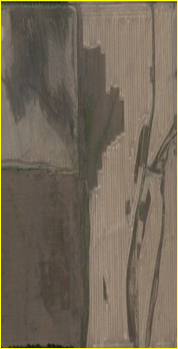
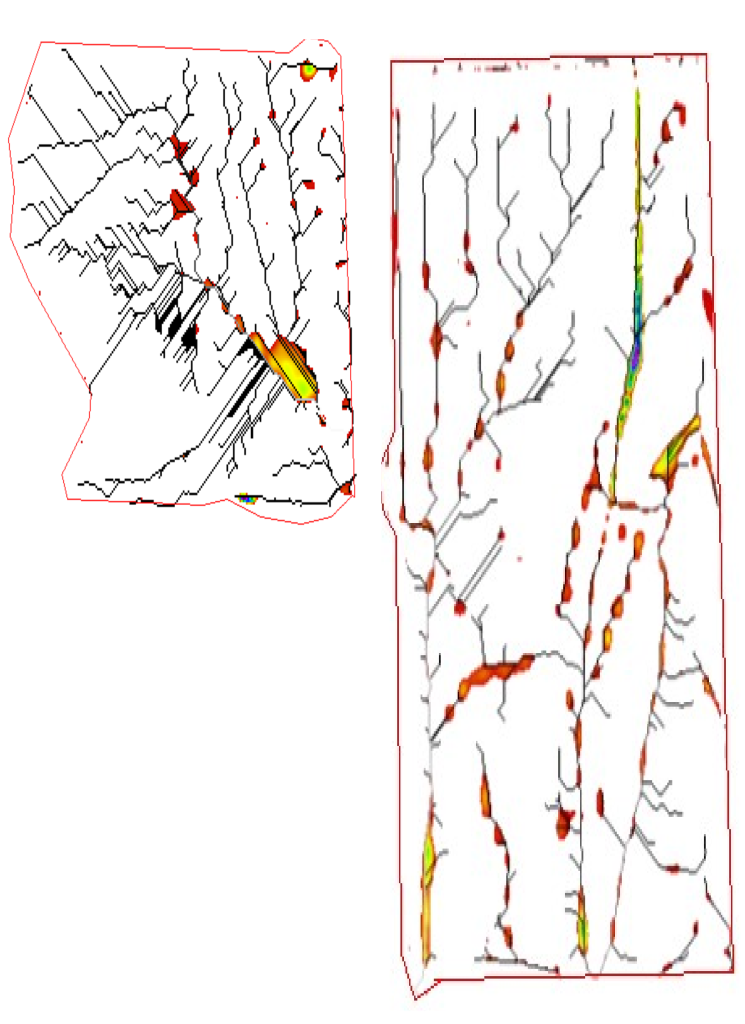
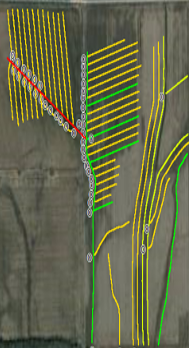
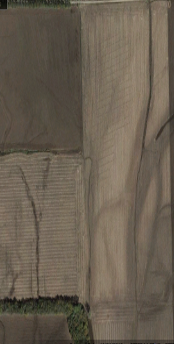
In the fall of 2017 a serious problem was brought to our attention that had been impacting crop production for years. The beans on th west side of the east field shown above could not be harvested at the time of the picture due to excess surface moisture. Depending on the year and crop, delayed if not prevent plant, serious yield reductions, and delayed harvest were the norm for the marked section s of neighboring fields.
An on site base station corrected RTK/GPS topo provided very accurate surface elevations from which to create a design . However, the preliminary anaysis showed the problems were not surface depressions. The solution would be to intercept hydraulic pressure from below before it could reach the surface.
During the winter of 2017/18 roughly 3500’ of tile was installed to the two fields. A 15 inch solid main was installed across the south side of the lateral field . The connection between the neighboring field on the west and the final outlet at the south east corner are regulated by water level control structures to manage the field capacity vs saturation at various times of each growing season.
By the fall of 2018 the moisture uniformity of the fields were much improved and the bulk of the crop impacting problems were resolved, as they continue to be today.
This site is very much under construction so check back from time to time for more exciting news about Conservation Drainage and what Long Enterprises LLC can do to help you increase yields while you work to make your farm a better place for you, those who will follow after you tomorrow, and for your friends and neighbors today.
For More Information Contact Larry @ Long Enterprises LLC Drain for Granin Division or call 316-524-3261,
Our Services
RTK/GPS precision Topography
Computer Aided Drainage Design
Surface Drainage Installations
(Channels and Plains)
Subsurface Tile Drainage Installation
(Controlled Drainage, Lift Stations Etc.)
DIY Drainage Consultation
DIY Equipment We Offer
AG Leader
(Soil Max Tile Plows, Stringer Carts, GPS, SMS Software, Etc.)
Holcomb Scrapers
Inteq Distributors
(Topcon Lasers, Laser and GPS excavator guidance, GPS dozer guidance, Laser scraper machine control. rods tripods etc.)
Prinsco and Frtatco Drain Tile Products
316-524-3261 Office
620-705-1770 Cell
Larry Long
Long Enterprises, LLC Drain for Grain Division
